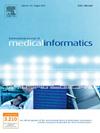From text to data: Open-source large language models in extracting cancer related medical attributes from German pathology reports
IF 4.1
2区 医学
Q2 COMPUTER SCIENCE, INFORMATION SYSTEMS
International Journal of Medical Informatics
Pub Date : 2025-07-02
DOI:10.1016/j.ijmedinf.2025.106022
引用次数: 0
Abstract
Structured oncological documentation is vital for data-driven cancer care, yet extracting clinical features from unstructured pathology reports remains challenging—especially in German healthcare, where strict data protection rules require local model deployment. This study evaluates open-source large language models (LLMs) for extracting oncological attributes from German pathology reports in a secure, on-premise setting. We created a gold-standard dataset of 522 annotated reports and developed a retrieval-augmented generation (RAG) pipeline using an additional 15,000 pathology reports. Five instruction-tuned LLMs (Llama 3.3 70B, Mistral Small 24B, and three SauerkrautLM variants) were evaluated using three prompting strategies: zero-shot, few-shot, and RAG-enhanced few-shot prompting. All models produced structured JSON outputs and were assessed using entity-level precision, recall, accuracy, and macro-averaged F1-score. Results show that Llama 3.3 70B achieved the highest overall performance (F1 > 0.90). However, when combined with the RAG pipeline, Mistral Small 24B achieved nearly equivalent performance, matching Llama 70B on most entity types while requiring significantly fewer computational resources. Prompting strategy significantly impacted performance: few-shot prompting improved baseline accuracy, and RAG further enhanced performance, particularly for models with fewer than 24B parameters. Challenges remained in extracting less frequent but clinically critical attributes like metastasis and staging, underscoring the importance of retrieval mechanisms and balanced training data. This study demonstrates that open-source LLMs, when paired with effective prompting and retrieval strategies, can enable high-quality, privacy-compliant extraction of oncological information from unstructured text. The finding that smaller models can match larger ones through retrieval augmentation highlights a path toward scalable, resource-efficient deployment in German clinical settings.
从文本到数据:从德国病理报告中提取癌症相关医学属性的开源大型语言模型
结构化肿瘤文档对于数据驱动的癌症治疗至关重要,但从非结构化病理报告中提取临床特征仍然具有挑战性,特别是在德国医疗保健行业,严格的数据保护规则要求部署本地模型。本研究评估了开源大型语言模型(llm)在安全的本地环境中从德国病理报告中提取肿瘤属性的能力。我们创建了一个包含522份带注释报告的金标准数据集,并使用另外15,000份病理报告开发了一个检索增强生成(RAG)管道。五个指令调整的llm (Llama 3.3 70B, Mistral Small 24B和三个SauerkrautLM变体)使用三种提示策略进行评估:零射击,少射击和ragg增强的少射击提示。所有模型都产生结构化的JSON输出,并使用实体级精度、召回率、准确性和宏观平均f1分数进行评估。结果表明:羊驼3.3 70B综合性能最高(F1 >;0.90)。然而,当与RAG管道结合使用时,Mistral Small 24B实现了几乎相同的性能,在大多数实体类型上与Llama 70B相匹配,同时需要的计算资源显着减少。提示策略显著影响性能:少量提示提高了基线精度,RAG进一步提高了性能,特别是对于少于24B个参数的模型。在提取不太常见但临床上至关重要的属性(如转移和分期)方面仍然存在挑战,强调了检索机制和平衡训练数据的重要性。本研究表明,当与有效的提示和检索策略相结合时,开源法学硕士可以从非结构化文本中提取高质量、符合隐私的肿瘤信息。通过检索增强,较小的模型可以匹配较大的模型,这一发现突出了德国临床环境中可扩展、资源高效部署的道路。
本文章由计算机程序翻译,如有差异,请以英文原文为准。
求助全文
约1分钟内获得全文
求助全文
来源期刊

International Journal of Medical Informatics
医学-计算机:信息系统
CiteScore
8.90
自引率
4.10%
发文量
217
审稿时长
42 days
期刊介绍:
International Journal of Medical Informatics provides an international medium for dissemination of original results and interpretative reviews concerning the field of medical informatics. The Journal emphasizes the evaluation of systems in healthcare settings.
The scope of journal covers:
Information systems, including national or international registration systems, hospital information systems, departmental and/or physician''s office systems, document handling systems, electronic medical record systems, standardization, systems integration etc.;
Computer-aided medical decision support systems using heuristic, algorithmic and/or statistical methods as exemplified in decision theory, protocol development, artificial intelligence, etc.
Educational computer based programs pertaining to medical informatics or medicine in general;
Organizational, economic, social, clinical impact, ethical and cost-benefit aspects of IT applications in health care.
 求助内容:
求助内容: 应助结果提醒方式:
应助结果提醒方式:


